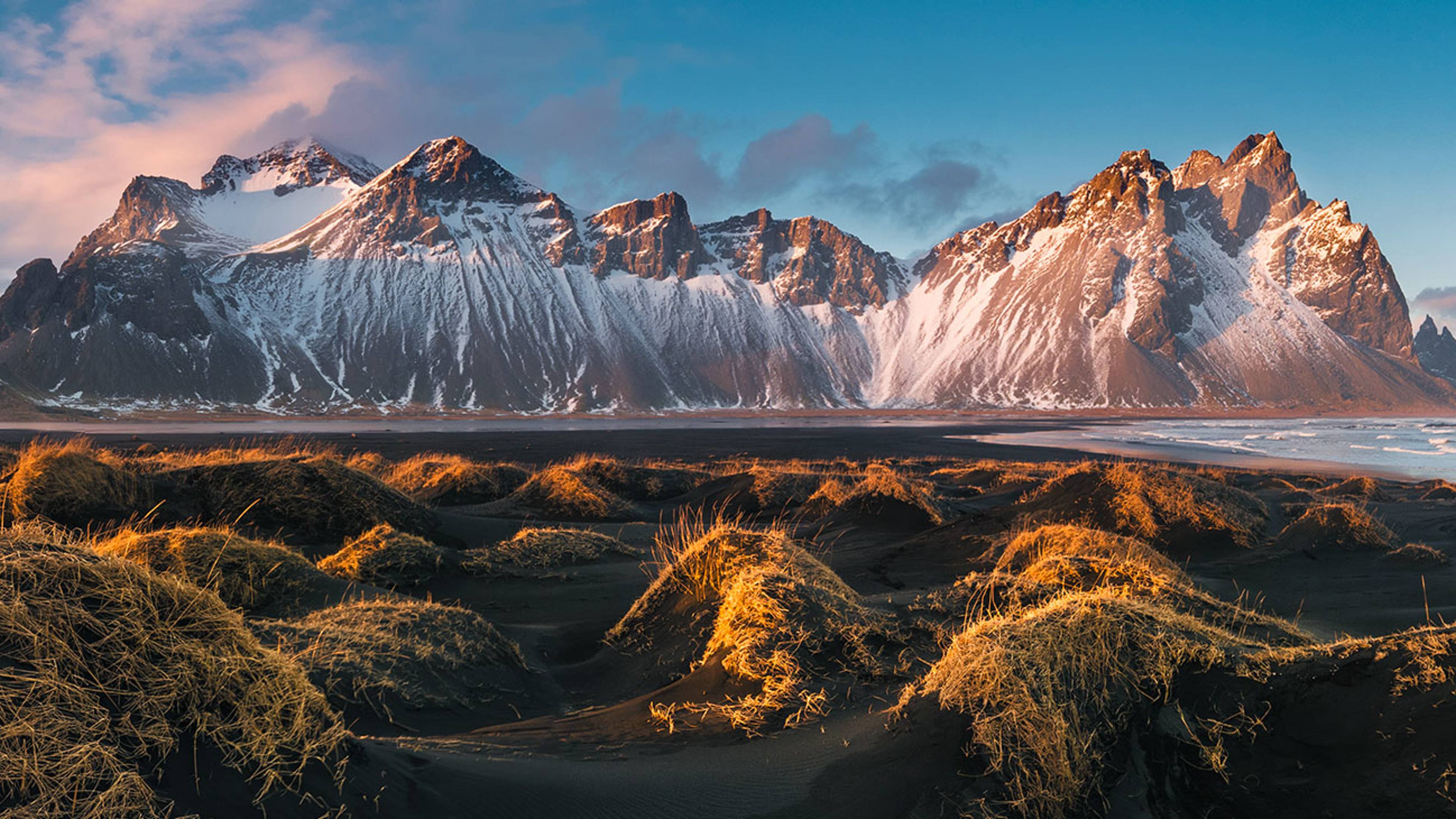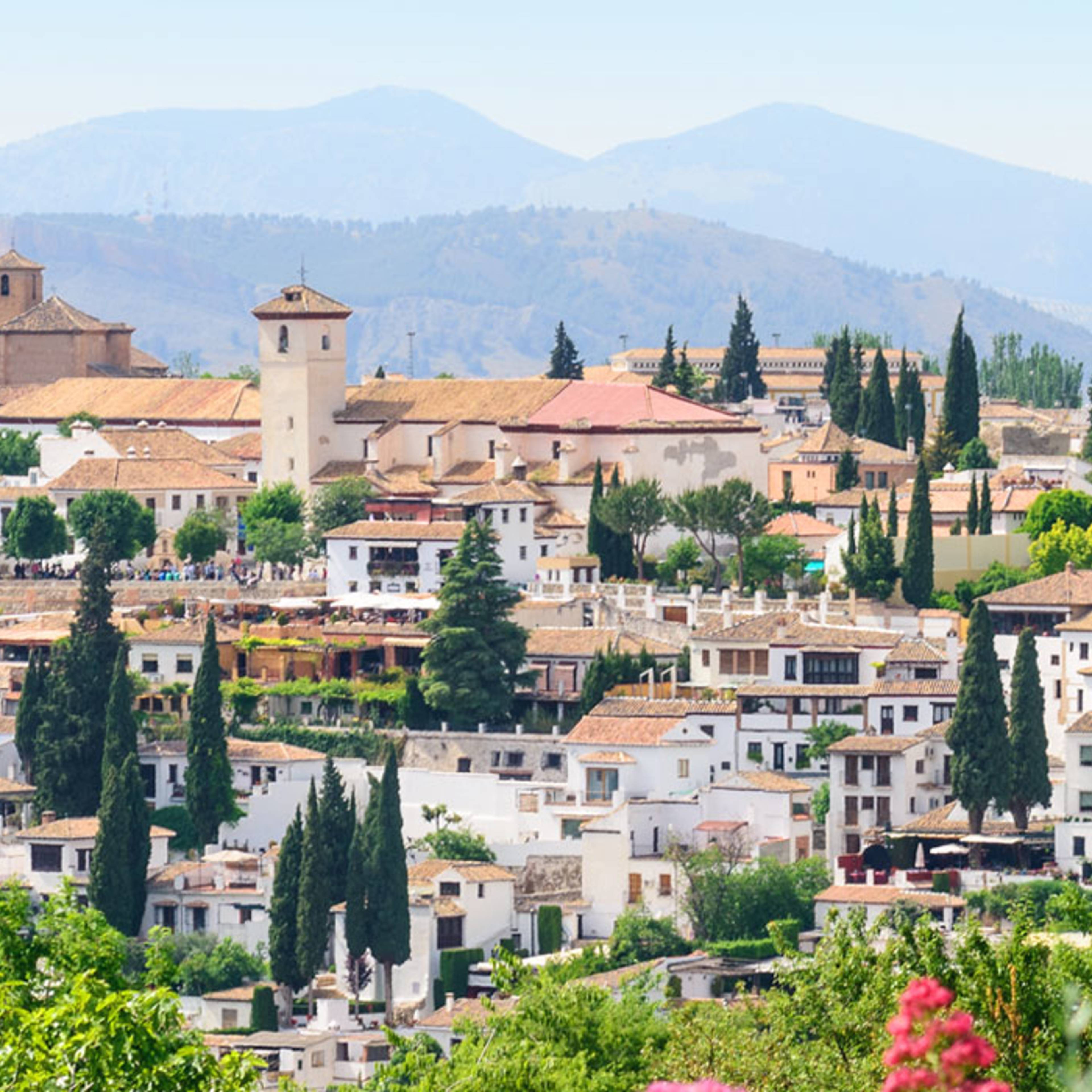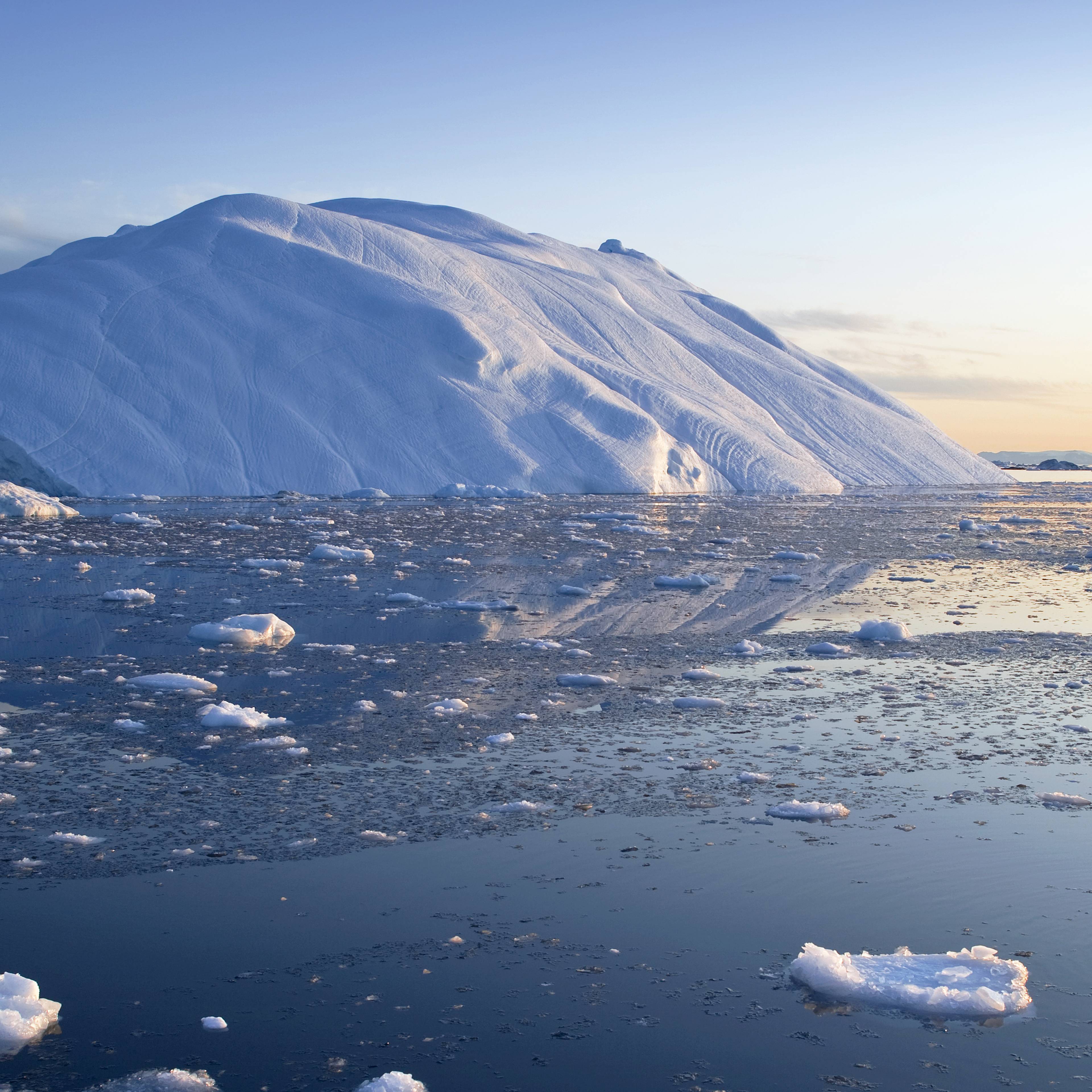

Travel in Iceland
Iceland is one of Europe’s fastest growing tourist destinations and with so much beauty, variety and culture, it’s no wonder that tourists keep returning to the island. If you haven’t yet been and are wondering if Iceland is for you, be inspired our top 5 reasons to travel to Iceland:
For a trip that’s suitable for any age or traveller. Whether you’re travelling with children, with friends, as a couple or going solo, Iceland is the perfect destination. Children and adults alike will be blown away by the dramatic cliffs of the fjords or the thrill of seeing a whale up close. For a culture trip. Reykjavik is well known for its artsy atmosphere and you will notice this as soon as you step foot in this cool city, with cool bars, cafes, museums, galleries and shops around every corner. For delicious food. Stay in Reykjavik for a taste of haute cuisine in any of the cool, minimalistic restaurants that are becoming famous here, or go off the beaten track; going on a fishing trip in the afternoon to catch your evening meal. Iceland’s fresh seafood is unbeatable and this alone is well worth the trip! For an experience of Iceland’s animals. See the wild ponies that roam the fjords here as you hike around this incredible location. Visit the westman islands to see the famous puffins that live here in their hundreds. Go on a once in a lifetime cruise to see the whales and killer whales that live in the waters surrounding Iceland. For more natural beauty than you’ve ever seen. Visit one of the many stunning waterfalls, fjords, villages, beaches, cities or forests here, which are almost entirely untouched. Godafoss, meaning ‘the waterfall of the gods’ is just one unmissable spot, why not have a picnic here to truly enjoy it. The black sand beach is just one example of an incredible Icelandic cove, with so many more, such as Diamond Beach.
Guide to travelling in Iceland
Iceland offers its visitors a stunning environment that feels like the end of the earth. Volcanoes, waterfalls, fjords, geysers, hot springs and welcoming locals all packed into a quirky island about the size of Ireland. This unique island nation is technically considered a part of Europe but is culturally and geologically worlds apart from anywhere else.
Despite its small size, it is home to a diverse and constantly shifting landscape that has become a preferred destination for people from all over the world. Icelanders are proud of their heritage and the unique geologies that set them apart, this is why they make the best tour guides for their fascinating home.
You can choose the exact spots you want to see, you can also add some off the beaten path excursions. After you take in the quaint towns and stunning national parks that have catapulted Iceland to the top of must-see lists in the last few years, relax in cosy accommodation and soak in the geothermal hot springs.
Why go to Iceland with a local travel agent?
Apart from having someone to take care of the hotel, any activities, and the planning of your itinerary, our local travel agents in Iceland also provide a great safety net. Travelling in a foreign country can be difficult, and having someone local that you trust and can call, with any problem at any time, makes it that much easier. Anytime you need help with something, you have someone who is just a phone call away—whether its a serious issue or just that you need a recommendation for a good restaurant. A local agent can help you to navigate any and every situation and so it’s a great resource to have for all travellers.
Compared to many other travel websites that claim to offer advice and tips, a local agent provides authentic and reliable advice every time. In countries with different languages—even ones like Iceland where the majority of the population speaks English—having an intermediary to handle things in the local tongue and translate for you whenever you need it can come in very handy both for fun and for more unexpected situations. Travellers navigating Iceland with a local agent always appreciate not having to worry about those confusing road signs and impossible Icelandic names.
What are the most popular things to do in Iceland?
Wondering where to see Puffins, Iceland’s adorable birds that populate its basalt beaches, or the best time of year to watch whales splash in the ocean? Travellers have spent their days in Iceland:
- Visiting the most Northern capital in the world, Reykjavik
- Swimming in translucent hot water springs in the middle of a lava field
- Staying in Húsavík, the European whale-watching capital
- Admiring the largest cliffs in Europe at Látrabjarg
- Making the most of the summer sun that only goes down from midnight to 3AM
- In the summertime, a self-driving tour along the ring-road gazing at charming countryside village and beautiful glaciers, lagoons and waterfalls.
- In wintertime, seeing the stunning Northern Lights, one of the most amazing features of Iceland that people come from all over the world to see
- Taking advantage of Iceland’s winter activities; exploring glaciers, crystal ice caves, or snowmobiling.
Looking to add bathing in a thermal pool, a horseback ride, an introduction to glacier walking, or watching the Northern Lights? No problem. Browse our tour ideas and then contact your local agent to start creating your tailor-made holiday to Iceland.
When is the best time of the year to go to Iceland?
The best time to visit Iceland will depend entirely on what you would like to see during your visit. Summer in Iceland is truly incredible, since warmer temperatures and midnight sun mean that you won’t be limited by short days, extreme weather or freezing temperatures. Self-drive tours are best in the summer, as are hiking and trekking holidays. To see the Northern Lights, visit Iceland between November and February when the long nights and wintery conditions bring out this incredible phenomenon. Generally, off-peak seasons, during autumn and spring will be less crowded and you will have your pick of accommodations, as well as the possibility of slightly lower prices.
What is the most unique off the beaten track experience in Iceland?
In a country that has Skagafjörður, a peninsula commonly referred to as the “peninsula of the trolls”, there are plenty of exciting adventures to find off the beaten track. Those wanting extraordinary experiences should head up to the West fjords for incredible hiking and mountain biking. An area that is both less explored and less developed than the rest of Iceland, it offers unbelievable mountain ranges that are different from anywhere else on Earth, all with fewer tourists and small towns that are few and far between. In the winter time, it’s the perfect place to go skiing, and in the summer, you can take guided mountain-biking tours that will help you reach the middle of nowhere...it’s hard to get more off the beaten track than that. For those wanting to see orcas, the west coast also offers Snaefellsnes, a perfect place to spend a couple of days and take in some incredible whale watching.
Wildlife in Iceland
Iceland is spoiled with a rich variety of wildlife to explore and observe. Land mammals, marine mammals and birds are the species a traveller will find.
Where and when to see whales in Iceland?
The best time to see whales in Iceland is the summer time. Husavik, a city located in the north is known as the whale capital of Iceland, which might make it the whale-watching capital of the world. Nowhere else do you have a better chance of seeing whales in their natural habitat. Many tourists take advantage of the tours available in Reykjavik, but those in the know always advise that Reykjavik whale tours can be too crowded and might have mixed results—to see real whales, you have to head to Husavik. Mid-September usually offers the most amount of whales, but at any point in the summer months, you should be sure to see these majestic creatures gliding through the water. For those wanting something extra, the nearby town of Akureyri offers tours that also come with sea angling, where the crew of the whale-watching boat will also fish and cook whatever they catch for all participants—an authentic and delicious two-in-one experience!
Where and when to see puffins in Iceland?
The adorable Atlantic puffins have become a symbol for Iceland and a major draw for anyone wanting to watch one of the world’s cutest animals. While puffins spend most of their time at sea, they return to land for mating season and to build colonies every summer—and Iceland remains one of their favourite summer vacation spots. In the southern town of Ingólfshöfði, a hay cart ride is offered to puffin enthusiasts, giving you a fun experience as you drive around the coast watching the puffins in their natural habitat. The best time to make the trip is from early June until late August, sometimes even up to the middle of September. The South isn’t the only place that puffins love to visit, though. Some of their favourite fish live up north, so you can see puffins hunting down their preferred meal all along the island.
When is the best time to see the Northern Lights in Iceland?
The bright glow of the aurora borealis remains one of the most fascinating and beautiful natural phenomena on the planet. Created by a combination of gases that are only visible at certain latitudes; the Northern Lights put on a truly incredible light show in the night sky that is unlike anything you’ve ever seen and Iceland is one of the few places where you can see them. The best time to catch this spectacle is from September to March with the brightest glow happening from November to February. A favourite spot for locals is a cabin hot tub on a fjord, watching Northern Lights dancing above while they relax in a warm pool— so a cabin complete with hot tub is a must for any itinerary that wants to include an authentic Northern Lights viewing party.
What are the most scenic areas for a road trip in Iceland by season?
For an unbeatable winter road trip, follow the southern coastal route to take in some of Iceland’s top attractions and incredible scenery, while avoiding the tourists that typically travel here during the summer. Start in Reykjavik, heading on past the Blue Lagoon, The Golden Circle, Vestmannaeyjar, Skogafoss, Vik, Svartifoss, Diamond beach and so much more. Plan the route as you wish, with total flexibility to see anything and everything you want.
During the summer months, the roads in the north are clearer and are now drivable, so why not do a full ring road tour, taking in everything that this small but amazing island has to offer. See everything in the South, as well as unforgettable Northern sites, such as Godafoss, Dettifoss, countless fjords, whales and killer whales, as well as all the local wildlife, such as puffins and wild ponies.
What is the most suitable car for a road trip in Iceland?
The best type of car will depend on how many people are in your group and how big the bags you expect to bring with you are. Automatic cars are freely available in Iceland, but usually, require an extra fee because manual transmissions are more common. 4x4s are perfect for going off-roading, but otherwise, small-size cars from familiar brands like Hyundai are available. Those wanting some adventure should request a four-wheel drive with good suspension as some of the roads away from towns can be quite bumpy. Studded tires are required in Iceland, and these cars should be requested in both summer and winter. However, southern roads in the summertime can be much more manageable.
What makes Iceland a great destination for couples?
Iceland can be very romantic. The country is filled with natural baths and hot pools you can lounge in while looking up at the Northern Lights in the sky above. There’s also the famous Blue Lagoon, a geothermal spa that has become one of the most visited attractions in the entire country. Couples wanting quality time in a stunning environment can’t go wrong by renting a cabin out in the middle of nowhere, with nothing to enjoy but each other and the Icelandic landscape. Those less interested in isolation and nature can find wonderful restaurants for every type of cuisine in the charming capital, Reykjavik. Boutique hotels offer cosy suites perfect for romantic getaways, and there are plenty of walking and hiking tours to take during the days.
Which tour and activities to travel Iceland in 1 week?
Designing the perfect trip to Iceland often depends on the season in which you will be visiting. In the winter, the days are incredibly short and temperatures hover around freezing or below, but considering how close it is to the Arctic, it’s actually quite warm, especially in the south.
- One week of winter in Iceland could best be spent on a driving tour around the South coast.
- Filled with sights like the famous (and somewhat unpronounceable) Eyjafjallajökull volcano or the gorgeous Seljalandsfoss waterfalls, Iceland’s Southern coast is the perfect destination for nature lovers with almost all sites accessible on a day trip from Reykjavik for those who want a balance between city life and wild exploration.
- In the summertime, a full seven days should be spent on an express tour of the entire island, circling all of the incredible landscapes Iceland has to offer along its main ring road.
- One night in each destination as you circle from glaciers to charming villages to breathtaking mountains, stopping to take advantage of Iceland’s best activities like snowmobiling, ice-skating, and of course, the world-famous northern lights.
Why should newlyweds spend their honeymoon in Iceland?
Newlyweds honeymooning in Iceland have access to incredibly charming hotels, many of which were built specifically for young couples. These spots offer special spa treatments and therapies that provide some of the most relaxing moments possible with massages and natural hot baths. In the winter time, with freezing temperatures outside, it can be the perfect time to enjoy a hot spring together with Iceland’s gorgeous night sky up above. Other honeymooners looking for a special experience love walking over a frozen Icelandic pond for the perfect romantic walk. If you want a more adventurous and active honeymoon, the summertime is the perfect opportunity for newlyweds wanting to be adventurous with hikes and mountain biking.
When to go in Iceland?
The best time to go to Iceland is in the summer: the temperatures are pleasant and the days are long. Depending on the region you are going to, you can also go in May or September, when there are fewer tourists and the climate is still pleasant, but be warned: some trips and sites are closed during these months. Between October and April, the country is nearly always in darkness, but you can see the magnificent aurora borealis if you are ready to brave the cold and the night.
Traveller reviews of their trip to Iceland
How to get to Italy?
Transportation to in Iceland is not included in the price of your trip. You can easily book them at any time through one of our partners.




